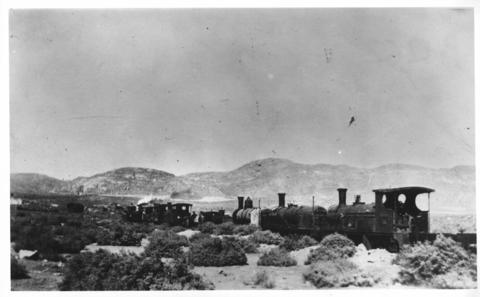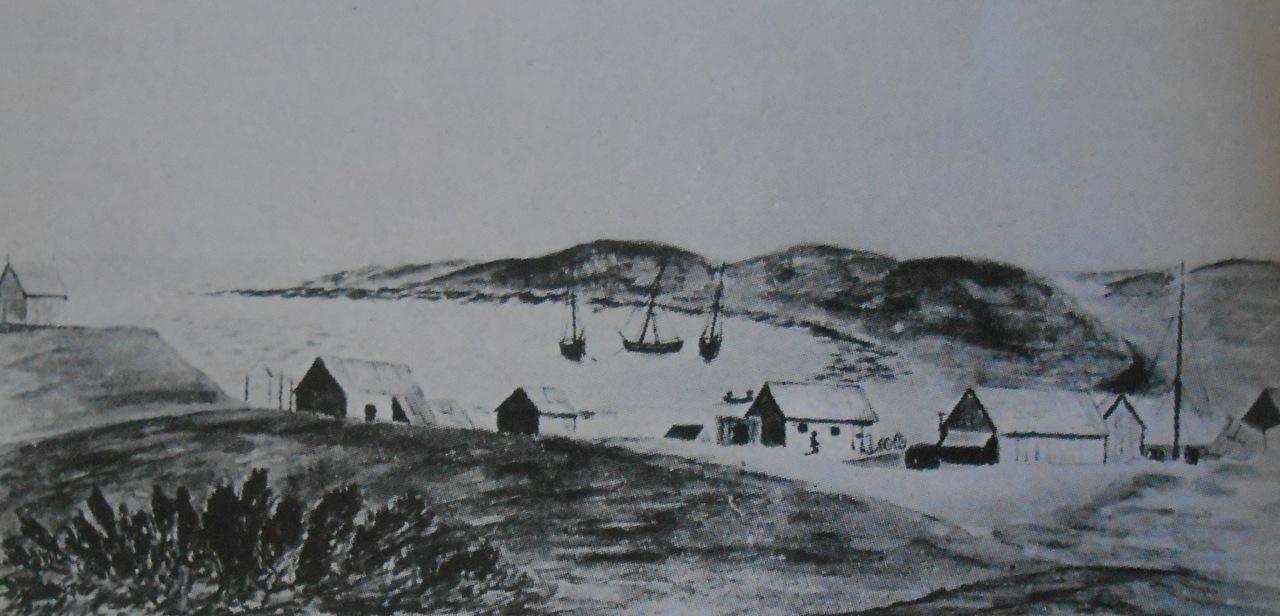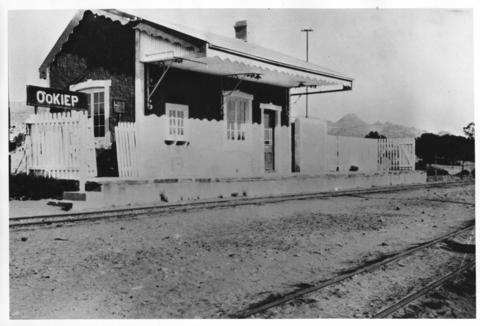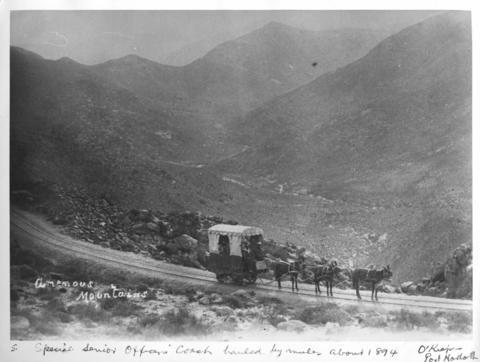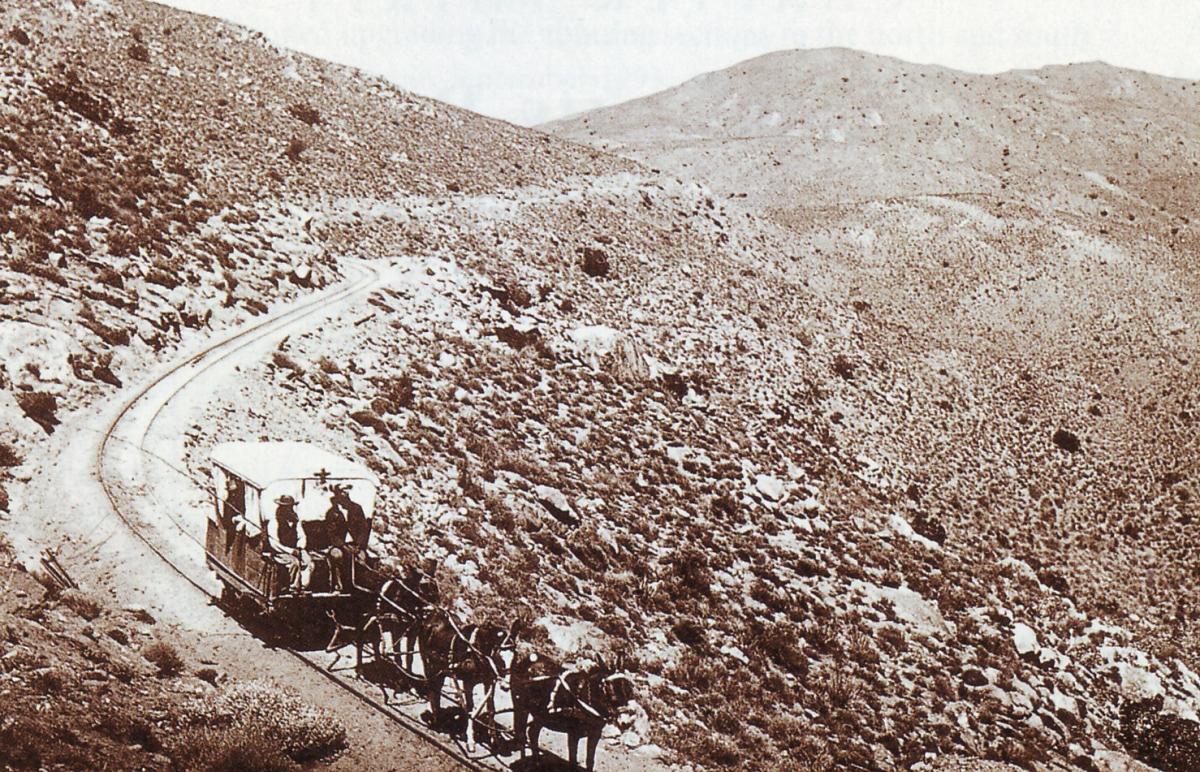
Disclaimer: Any views expressed by individuals and organisations are their own and do not in any way represent the views of The Heritage Portal. If you find any mistakes or historical inaccuracies, please contact the editor.
In the article below, Graham Ross and Tony Murray celebrate the achievements of Richard Thomas Hall, the man responsible for the railway line connecting Okiep and Port Nolloth. The piece first appeared in the publication 'Past Masters: Pioneer Civil Engineers who contributed to the growth and Wealth of South Africa'. Click here to view the stories of other great engineers.
Ore from the Namaqualand copper mines was shipped to Cornwall for treatment, so it was perhaps natural that the Cape Copper Company appointed a Cornishman to investigate its transport problems. Richard Thomas Hall, the engineer who conceived, designed and built the narrow gauge railway through the forbidding country from Port Nolloth to Okiep, was born in Falmouth, Cornwall in 1823. His experience as Superintendent of the narrow gauge Redruth to Chacewater Railway and of its conversion from horse to steam traction stood him in good stead when it came to tackling the transportation problems of the Namaqualand copper mines.
The Port Nolloth to Okiep railway line (DRISA)
He arrived in Namaqualand in 1865, enlisted the help of surveyor Patrick Fletcher, and carried out extremely thorough investigations into the various options for getting the copper to the coast. He did not exclude road transport from his studies, but he must soon have become aware of the difficulties attached to this mode, particularly the seasonal lack of water and forage for draught animals, which meant that the riding season was limited to a few months in each year. In the closed season, ore would be stockpiled and income would cease, which had obvious drawbacks for the copper companies.
Thus his comprehensive report recommended a narrow gauge (2’6”) tramway or light railway from Okiep to Port Nolloth. The Colonial Government did not support this solution and instead built Fletcher's Messelpad road to Hondeklip Bay. Unfortunately the Cape Copper Company was in the meantime committed to contributing to the improvement of this road, so Hall's proposal for a private railway, although accepted in principle, could not be implemented at that time.
Sketch of Hondeklip Bay 1854 (Copper Mining in Namaqualand)
However, when in the next few years the transportation of ore by wagon went from bad to worse, the Copper Company called Hall back to carry out the necessary surveys, and to design and build the Port Nolloth railroad which he had recommended three years earlier.
It was a formidable task involving a 70 kilometre section across the littoral sandveld to the foot of the escarpment. The Anenous Pass (see main image) then climbed 400m to the plateau over a distance of 12km, and the final section across the hardeveld to Okiep covered 55km. Not only did Hall have to cope with the unfriendly climatic, geological and topographic conditions, but also with a lack of trained artisans and labour, and with the continual difficulties of getting supplies and equipment delivered on time from overseas. (It should be remembered that Government road builders could invoke convict labour - Hall had no such resources.) Nonetheless, he succeeded in building a work unique in our history, and one which saved the copper mines from closure.
The complete railway was formally opened on 1 January 1876, and was in service until 1942.
Okiep Railway Station (DRISA)
The first section was brought into use using mules, and when Hall saw how well the track stood up to the carriage of materials he recommended trying a light steam engine. Two locomotives were imported, but proved unreliable, not the least because they consumed large quantities of water. The Company reverted to mules and for a time kept an enormous stable of some 260 animals. Each train required about 60 mules to pull it, except on the section down the Anenous Pass, which the trucks ran down under gravity - and the watchful eye of the brakeman!
Port Nolloth narrow gauge railway. Circa 1884. Senior officers' coach by mules on its way down the mountain. (DRISA)
Eventually, and not without some false starts, steam was reintroduced in 1890, and served until the line was taken out of service. Road motor transport proved more efficient and gradually took over, initially to Port Nolloth and later to the SAR railhead at Bitterfontein.
The benefits of the railway were quite spectacular: In 1870, 12,000 tons of ore were mined, but only 7,300 tons could be transported to the port. In 1872, when only the coastal section was in operation, 13,240 tons were exported. Little wonder that the company opted to extend the line!
After the Namaqualand job, Hall was commissioned by William Brounger of the Cape Railways to find a way for the line from Worcester through the Langeberg to the Karoo, from where the location of the line to the Diamond Fields was relatively simple. His best route was via Montagu and Ladismith and then doubled back to Touws River. He spent about six months on that job, for which he was paid a mere £100. (Fortunately for the efficiency of the SAR, Wells Hood, Brounger's star location engineer, discovered a much more direct line through the Hex River valley.) During this period Hall's voice was heard in influential circles, and he is one of those who advised the Colonial Select Committee to adopt the 3ft 6in (1 067 mm) gauge which has since become the standard gauge in Africa south of the Sahara.
Hall next did a flying survey from Pretoria to Lourenco Marques for President Burgers of the Transvaal Republic, and then became traffic manager of the Cape Railways at Port Elizabeth until he was pensioned at the age of sixty. Thereafter he filled his days as manager of Thomas' Mine (near Avoca). In 1889 he was appointed by President Brand to manage the Free State railways, but he died in Pretoria while on his way to take up the post. He was then aged 66 years.
Like several of his contemporaries, Richard Thomas Hall was a bold and competent engineer whose achievements merit more appreciation than they have received in the professional annals of our country.
Graham Ross liked to call himself a "padmaker". Although in the early stages of his career he roughed it with the hardy band of men who built roads in the dry and dusty rural areas of the Cape Province, in later years, after becoming one of the first qualified geometric engineers in the country, he operated out of a Cape Town office complete with drawing board and calculating machine. On retirement he began compiling a database of the history of Cape Provincial roads and, particularly, of mountain passes, which would earn him a doctorate from Stellenbosch University. This entailed a great deal of travelling, photographing, interviewing and research. At about the same time the Transportation Division of SAICE asked him to organise a series of articles about the passes for inclusion in the SAICE Magazine. For the SAICE centenary in 2003 Graham was persuaded to expand his articles into a book for general readers, which he produced at short notice with his customary care and flair, and "The Romance of the Cape Mountain Passes" appeared in bookshops soon afterwards.
Tony Murray is a retired civil engineer who has developed an interest in local engineering history. He spent most of his career with the Divisional Council of the Cape and its successors, and ended in charge of the Engineering Department of the Cape Metropolitan Council. He has written extensively on various aspects of his profession, and became the first chairman of the History and Heritage Panel of the South African Institution of Civil Engineering. Among other achievements he was responsible for persuading the American Society of Civil Engineers to award International Engineering Heritage Landmark status to the Woodhead dam on Table Mountain and the Lighthouse at Cape Agulhas. After serving for 10 years on SAICE Executive Board, in 2010 he received the rare honour of being made an Honorary Fellow of the Institution. Tony has written manuals, prepared lectures and developed extensive PowerPoint presentations on ways in which the relationship between municipal councillors and engineers can be more effective, and he has presented the course around the country. He has been a popular lecturer at UCT Summer School and has presented five series of talks about engineers and their achievements. He was President of the Owl Club in 2011. His book "Ninham Shand – the Man, the Practice", the story of the well-known consulting engineer and the company he founded, was published in 2010. In 2015 “Megastructures and Masterminds”, stories of some South African civil engineers and their achievements was written for the general public and appeared on the shelves of good bookstores. “Past Masters” a collection of his articles about 19th century South African Engineers is also available from the SAICE Bookshop.
Comments will load below. If for any reason none appear click here for some troubleshooting tips. If you would like to post a comment and need instructions click here.

